Ancient History looks at every aspect of the ancient world: you'll find articles covering politics, society, literature, language, religion, economics, and art - all in one magazine! Like its big brother, Ancient Warfare, Ancient History Magazine is a bi-monthly, 60-page magazine that relies on a thematic approach: each issue is centered around one specific subject. From ancient Egyptian trade and Roman family life to the lost city of Pompeii, there's sure to be something for everyone - all presented in a well-researched but accessible, fun manner.
Ancient History Magazine
PRELIMINARIES
4000-year-old temple and theatre discovered in Peru
Bronze Age White Horse revived
Evidence that Mycenaeans went fossil hunting
Late-Antique Roman prison discovered in Corinth
Portico may be Caligula's lost gardens
World's oldest ship found in deep sea
8000-year-old figurine discovered in Turkey
FROM TROY TO ROME • In Greek mythology, Aeneas, son of Aphrodite, was a brave prince fighting against the Achaeans in the Trojan War. Yet by the first century BC, Rome’s first imperial dynasty was claiming to descend from him. How did Aeneas end up in Rome?
IMPERIAL POLICY OR IMAGINATIVE EXPERIMENT? • It is sometimes thought that there was a policy of settling barbarian peoples within the frontiers of the Roman Empire in Late Antiquity. However, the fifth-century ‘settlement of barbarians’ was a very different business from that which it is commonly supposed to have been.
THE LAND OF NINKASI • Mesopotamia, the land between the rivers, was also the land of Ninkasi, goddess of beer. When she poured out the filtered beer, ready for drinking – according to a hymn written in her honor – it was like “the onrush of the Tigris and the Euphrates.” Mesopotamia can claim many firsts: the first cities, the first states, the first written language in world history. It also played host to the world’s first great beer culture.
Experimental brewing
DRINKING WITH THE ETRUSCANS • Wine has always been more than just a beverage; it’s a symbol of culture, tradition, and social interaction. For the ancient Etruscans, wine was a central element of life. From sophisticated winemaking techniques to social banqueting practices, the Etruscans left a lasting legacy in the history of viti- and viniculture.
Wine for the dead
VINES, VENUS, AND VOMITING • Wine was as much a part of the Roman identity as gladiators, togas, and roads. From the wellto-do to the down-at-heel, drinking wine was a part of everyday life. But who you were, what you drank, and where you drank it was all-important and, as with most things Roman, social status mattered. So how did class distinctions shape the way Romans consumed their wine, and were the drinking practices of the masses really so very different from those of the elite?
The spice of life
A pre-dinner dip
COMPETITIVE COMMENSALITY • The Celts were known to the Greeks and Romans as a people given to excessive drinking. While this reputation is most likely exaggerated in the sources, consuming alcohol was nonetheless an important element of Celtic society, strengthening relationships and reaffirming social status.
WINEMAKING IN ROMAN ITALY • Wine was an important staple product in Roman Italy. It was used in religion, medicine, social events, formed a large part of trade, and was a key dietary component. How was this ubiquitous beverage actually produced?
SALTY SEA DOGS • The sea was an ever-present element in the Greco-Roman imagination. Most Greek poleis were less than a few days walk from the sea and the Mediterranean was the heart of the Roman Empire. However, the sea was dangerous and home, according to mythology, to monstrous creatures. Some of these creatures had canine aspects, and...
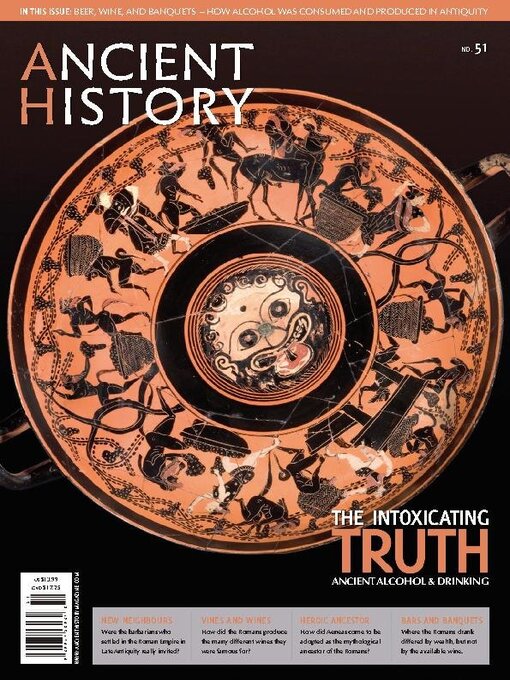
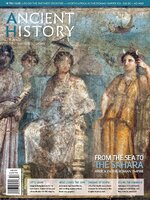 AH 52
AH 52
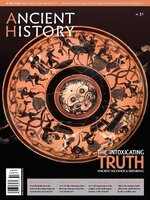 AH 51
AH 51
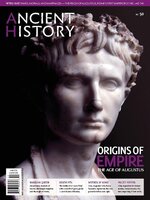 AH 50
AH 50
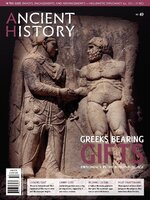 AH 49
AH 49
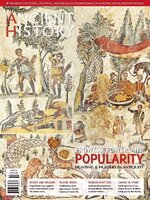 AH 48
AH 48
 AH 47
AH 47
 AH 46
AH 46
 AH 45
AH 45
 AH 44
AH 44
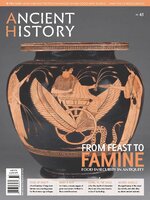 AH 43
AH 43
 AH 42
AH 42
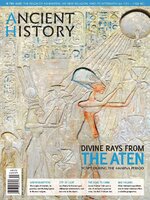 AH 41
AH 41
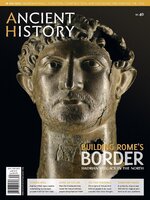 AH 40
AH 40
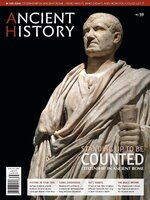 AH 39
AH 39
 AH 38
AH 38
 AH 37
AH 37
 AH 36
AH 36
 AH 35
AH 35
